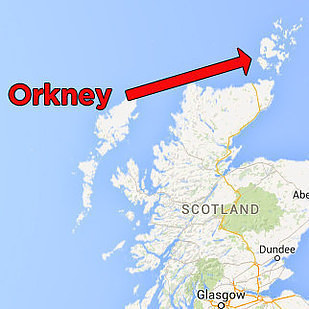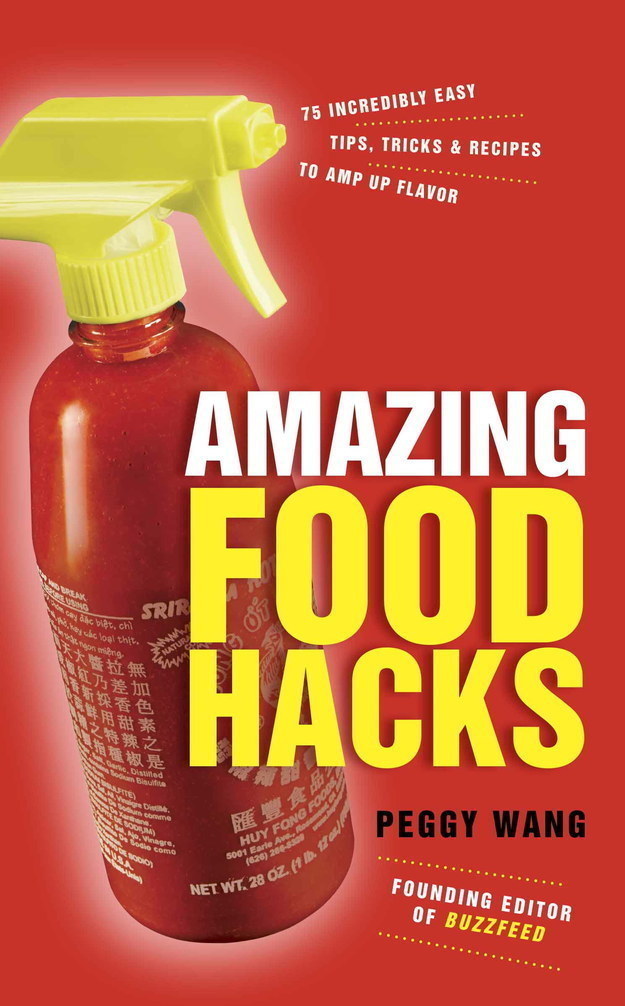In the new preface to the second edition of Whipping Girl, Julia Serano writes poignantly about how little positive transgender representation existed when she wrote the book in 2007. “I remember explicitly thinking to myself that I was trying to write a book that I wish that I had had as a teenager or young adult,” Serano writes, “one that would help me make sense of both my inexplicable feelings that I should be female rather than male, as well as the conflicting messages that were constantly telling me 'boys are better than girls' and 'women are only good for one thing.'" In the almost decade since the book was first published, Whipping Girl has become exactly that kind of book, recommended and passed around from trans woman to trans woman, as we all try to make sense of our lives.
Whipping Girl is a book about transgender politics and philosophy that comes out of Serano’s own experiences as a trans dyke in the first decade of the new millennium. It’s so effective in large part because its precise analysis is rooted in Serano’s urgent desire to communicate her ideas accessibly and transparently, so that both transgender and cisgender people can use them to change a gender system that oppresses transgender women. And because the book is clearly written, it is now often taught in college courses as an introduction to transgender issues. It’s the kind of success Serano did not anticipate, as BuzzFeed News spoke to her over the phone from her home in Oakland, California.
“A lot of trans people have told me over the years that the book has been important to them,” Serano said. “I definitely think it has affected a lot of people. I’d like to think it’s one of the influences, one of many influences that has helped shape where the trans movement has gone in the last decade.”
Whipping Girl is most famous for introducing the term transmisogyny into the language, which Serano uses to discuss the intersection of transphobia and misogyny that permeates the lives of trans women. She writes: “When a trans person is ridiculed or dismissed not merely for failing to live up to gender norms, but for their expression of femaleness or femininity, they become the victim of a specific form of discrimination: trans-misogyny.”

Seal Press
For Serano, her conception and use of the term is rooted in her activism, and came out of deeply practical need. “I was actively involved in challenging trans-woman exclusion within queer women's communities,” she said. “One of the things I encountered over and over and over again within those communities was people saying, ‘I can't be transphobic. We're letting in all these trans men into our events.’ And it became a way for me to point out that, oh well, you know, you're saying that you're not transphobic but you are being transmisogynistic." The concept of transmisogyny has become widely used by trans women not just to describe our experience but also to account for how cisgender people evaluate trans people. A good example is the public’s scrutiny of Caitlyn Jenner’s appearance and actions, even as it’s willing to give many cisgender people a pass on both casual and extreme transphobia.
Serano also pointed out that society continues to project negative meanings onto feminine gender expression — ideas that purport feminine people are just being feminine to fit in or to please men, rather than their inclination coming from a place that’s more intrinsic to their identity. “I think for anyone who moves through the world as a woman,” she said, “femininity is going to be a double-edged sword, in that if you are very feminine, people would dismiss you in certain ways, but then there's a certain amount of praise that you can get, but it's praise that comes from being judged in other people's terms and not necessarily your own.”
Another important concept in Whipping Girl that departs from both traditional models of gender and queer academic theories that try to dismantle them is the idea that gender isn’t simply a performance, but is the product of complex interactions between one’s subconscious sex and the social influences to which a person is exposed. Serano calls this the intrinsic inclinations model, as she asks readers not to deny that gender has a biological component, drawing from her academic background as a biologist.
“The beauty of the intrinsic inclinations model is that it simultaneously explains why most people appear to have typical genders […] and accounts for the vast diversity of gender and sexuality that exists in the world,” Serano writes. Among trans people, Serano’s theory is also powerful because it mediates among trans people who transition toward the binary end of the spectrum, and those whose identities and presentations defy binary categories altogether, allowing both identities to be fully acknowledged and respected.
Nevertheless, Serano has gotten flak for bringing biology into her discussion of gender. “I've heard people assume that I'm making a born-that-way argument or a biological determinism argument,” Serano said, while also acknowledging that the interpretation might have come about because she shied away from getting into biological details in the book as she wanted to be accessible. “The social world obviously also intersects with biology in order to create all sorts of gender and sexual variation.”

Seal Press
What Serano counters in Whipping Girl is the notion that gender is purely performance, a prevalent stance among academics and developed by the noted queer theorist Judith Butler. “I understand that for a lot of cisgender feminists and queer activists, the idea of it all being nurture seems really powerful in that it means that it's not necessarily our destiny to become a particular way,” she said.
However, it was important for Serano to assert the influence of biology because the notion of gender as pure performance has the potential to marginalize certain trans people. “People often use nurture in a way that suggests that if you turn out a particular way, for example, if you turn out to be a transsexual woman, then that must mean you're buying into a system.” Factoring in biology allows for expressions of gender that might seem designed to conform to society’s expectations of gender, but are in fact heavily influenced by intrinsic inclinations many people have had since early childhood, before they had any conscious notion of their gender.
For those who remain unconvinced, Serano recommends reading her second book, Excluded, which examines the issue of biology in relation to gender and sexuality in much greater detail. This is just one aspect of Whipping Girl that Serano wishes she could have delved deeper into. More substantially, she wishes that she would have been able to capture a greater range of trans experience and identity in her first book.
“Because I'm a very specific person and especially as someone who is a white, middle-class, able-bodied trans person, I think that a lot of issues that particularly people in our community who are most marginalized, there's not a whole lot of talk in the book about that,” Serano said, while also admitting that widespread discussions of specific groups within the transgender umbrella were only beginning to happen when she wrote Whipping Girl. “Other people have since gone on to articulate the differences between trans perspectives and experiences from lots of different sub-communities,” she said. “Knowing what I know now, I wish I could have brought the full breadth of those conversations into the book.”
In the end, Serano decided to leave Whipping Girl largely untouched, apart from her new preface and minor corrections. The second edition therefore allows readers to have a clear sense not only of how trans discussions have evolved in the near-decade since it was first published, but also how much the book influenced and anticipated the current state of transgender visibility and activism.
Over the past two years since I publicly disclosed as trans, I’ve spoken to many trans women who have been deeply affected by Whipping Girl. I came to the book late, in 2014, after deciding not to talk publicly about my own gender transition for many years, frustrated at how I was assumed to be cisgender, then subjected to discrimination whenever I disclosed as trans.
But when I finally realized that whatever personal problems I experienced were less important than being part of and advocating for the trans community, I started finding other trans people both on and offline. And they kept using this term I was unfamiliar with, but instantly recognized as soon as I heard it: transmisogyny. That was when I tracked down Whipping Girl and it fundamentally shifted my understanding of who I am.
Serano gave me vital tools to account for my experiences, which allowed me to confront people whose treatment of me changed after they found out I’m trans, and point them towards the direction of treating me and other trans women better. And because I spent so many years being an assumed cisgender woman, Whipping Girl also gave me the means to better integrate my experiences, as someone who has had to navigate the world while being perceived across varying states of gender.
I invited other trans women to discuss their experiences of the book, and here is what they wrote:
Zackary Drucker
Los Angeles, California; visual artist and TV producer; 32
Whipping Girl is the go-to primer for trans feminists. It inspired a new generation of trans feminist theory. Julia Serano examined and defined the structures of transmisogyny in a way that no one had ever done, and no one has done since. I use Whipping Girl as a reference book, and often return to it to pull quotes that are direct, clear, and more relevant than ever.
Mya Byrne
San Francisco, California; performing songwriter; 35
When I first read Whipping Girl right as I transitioned, I recognized and affirmed so many aspects of myself for the first time — and through Serano’s insights and analysis understood so much of what had negatively affected my upbringing, what had kept me from transitioning earlier, how society impacts and targets trans people, what transmisogyny is — how so much of what I was feeling or the mistreatment I was exposed to was not my fault. It was a life-changing experience, and still is, and I can't wait to read the second edition.
“I think for anyone who moves through the world as a woman, femininity is going to be a double-edged sword ... there's a certain amount of praise that you can get, but it's praise that comes from being judged in other people's terms and not necessarily your own.”
Morgan M. Page
Montréal Québec, Canada; writer and artist; 29
I first met Julia Serano on a rooftop patio in Toronto's West End shortly after her Whipping Girl tour stop, which I'd skipped. We were sandwiched between some 15 trans women drinking and talking frenetically about politics. I was the only one who hadn't read her book yet, because my younger self Didn't Read Books About Gender. But having met the new cause célèbre, I felt kind of obligated to give it a look. Whipping Girl blew my young trans brain apart, putting so many thoughts I didn't know I had into words for the first time. And it led me down a rabbit hole to other trans writers who would shape my thinking and my life, particularly Viviane Namaste. Julia got right into my 20-year-old brain and rewired it.
Anna McCormick
Upstate New York; 32
I started Whipping Girl while in a state of quiet self-loathing: if you’re transfeminine and looking for reasons to hide, this culture will not be slow to present them. I came back to the collection in a more sustained, less furtive way when I was starting to articulate my gender. Serano's analysis of transmisogyny as a form of oppression related to misogyny and transphobia while keeping its own specificity remains foundational for me. Of course, other intersections of class and race (and anti-blackness as an American constant) have to be thought through simultaneously, especially today, when increased media visibility coexists with an epidemic of racialized violence against women and femmes of color and sex workers. On a personal level, though, when I was ready, reading Serano (along with Imogen Binnie's bleak but cathartic Nevada) helped me understand and begin to slough off some of the shame I'd accreted like scales.
Tyler Vile
Baltimore, Maryland; writer and performer; 22
I first read Whipping Girl when I was coming out to myself in late 2012. I wasn’t even ready to come out to the people close to me, but this book told me, in no uncertain terms, that there was no shame in being a woman. I still wondered whether cerebral palsy would affect my transition at all. When I saw that this book didn’t have those answers, I researched it on my own. I came back to Whipping Girl in 2014, after I’d been on hormone replacement therapy for a year, and was awestruck by the honesty and humor in Serano’s writing. If I hadn’t picked it up more than once, I doubt I would’ve written my novel-in-verse, Never Coming Home, in quite the same way. I feel like I’m constantly recommending this book. My therapist had my copy for a while, now my girlfriend has it, and no, you can’t borrow it next — just buy the new edition.
“People often use nurture in a way that suggests that if you turn out a particular way, for example, if you turn out to be a transsexual woman, then that must mean you're buying into a system.”
Kai Cheng
Montréal Quebec, Canada; social worker and writer; 24
Julia Serano's Whipping Girl is the book I spent a long time being afraid to read — because I had never read anything about being and becoming a trans woman that lived up to the full, messy, ridiculous, beautiful, contradictory reality of our lives. When you're a young trans woman looking for herself in literature, you spend a lot of time being afraid of representation. You wonder, does it hurt more to not see yourself reflected, or to see yourself reflected wrong? And then, of course, you pick up Whipping Girl. And it gets everything right.
Hannah Kruse
Gera, Germany; teacher; 54
Whipping Girl was one of the first books I read after coming out to myself, and although I had dropped my mask of macho remarks already years ago and tried to consider feminism where and whenever possible, I had so many questions, especially about the relationship between feminism and being a trans woman.
So I searched the net and — inevitably — came across Julia's name and Whipping Girl. So many things I learned: transmisogyny, for example. And that any trans woman needs to be knowledgeable about and be practicing feminism.
One thing I as a femme especially took in: that we need to empower femininity and rid it of the societal connotation of femininity being artificial, frivolous, weak, superficial. We are often accused of "enforcing" these and Julia's book helped me deal with this.
Zoë Wilkinson Saldaña
Seattle, Washington; writer and researcher; 26
I’m not sure how I heard about Julia Serano, or why I chose to put in a hold request for Whipping Girl at the library where I worked. But I have a clear memory of Em bringing it to my desk. Em was kind older librarian with bright red hair – she volunteered as a sexual assault advocate for the city, and she shrieked uncontrollably whenever she saw a library mouse. I remember how Em's hands shook as she passed me a copy of the book, with the words "Transsexual Woman" on the cover. Em had a tremor that made her hands shake most of the time. But to me, in that moment, it felt like I had done something horrible.
Reading Whipping Girl on the floor my apartment, I wanted so badly to consume it is theory – as a way to think about femininity and femaleness and their bullshit place within society. I wanted to accomplish something real through thinking. Instead, I felt a weird mixture of excitement and shame. I snuck back into the returns section and scanned the barcode in myself. I felt it was the kind of thing I shouldn't be seen doing.
Over the years, the ideas in Whipping Girl have become indispensable to my everyday life. By understanding the social structures that produce transmisogyny, I can find ways to avoid being sideswiped by it. I celebrate the resilience and creativity and badassery of trans femmes in my life whenever I can – the righteous femme anger, the stubborn call to thrive in the face of it all. But back then, before I was ready to see myself in femmes like Em, or see myself in the word "transsexual," Whipping Girl felt like a banned book. Deep down, I liked that.
The second edition of Julia Serano’s Whipping Girl comes out from Seal Press on Tuesday, March 8.






























Curious George Learns About Ramadan From A Muslim Friend In An Upcoming Book